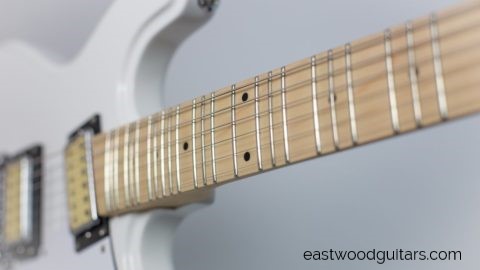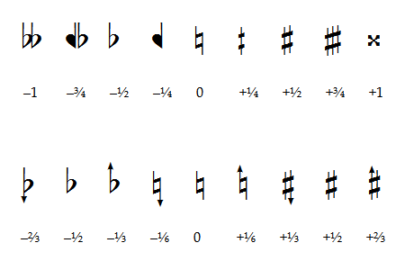
Western and non-western civilizations across the globe contain a plethora of various genres of music. Although these cultures aren’t universally on the same page – music is the universal language.
It wouldn’t be out of the ordinary to assume that most musicians today understand the functions of basic diatonic musical scales. But what about the notes… between the notes? Today, we are understanding Microtonal Music with Dave ‘Fuze’ Fiuczynski.
David ‘Fuze’ Fiuczynski

Living in Massachusetts as a professor of music at the Berklee School of Music, David ‘Fuze’ Fiuczynski is well-known in the contemporary jazz world as “a jazz musician who doesn’t want to play just jazz.”
As the leader of the band Screaming Headless Torsos, KiF, and a member of Hasidic New Wave, Fiuczynski has wildly explored many genres of music.
His explorations have landed him gigs with musicians such as former Police drummer Stewart Copeland, jazz pianist Hiromi Uehara, Dennis Chambers, Rudresh Manhanthappa, and many more.
Unlike many guitarists, David ‘Fuze’ Fiuczynski has turned guitar playing upside down experimenting in various tunings and blending genres of music such as rock, jazz, funk, Semitic, African, and Middle Eastern styles. Thus, the exploration of microtonal music.
Similar – Backward and Upside-Down in E-Flat feat. Eric Gales
The Notes Between the Notes

To break down microtonal music or systems in the easiest way possible is simply described as the notes between the notes. This is music that strays away from traditional 12-tone equal temperament (12 TET) in Western Music.
The common musician would be more attuned to the use of ‘semi-tones,’ or half-step intervals. Microtones are smaller intervals than that of semi-tones. Which is why they are also known as quarter tones or ‘micro-intervals.’
The use of microtones is presented heavily in traditional Indian styles of music for instance.
Here’s an example of Raga, a melodic framework used for improvisation using microtonal inflections:
Many microtonal guitarists such as Tolgahan Çoğulu, Harry Partch, Jon Catler, and Glenn Branca, all used microtonal guitars to easily capture those notes between the notes.
Here’s a clip of an adjustable microtonal guitar invented by Tolgahan Çoğulu:
It may sound like these notes are drastically out of tune because we are so used to hearing music measured by whole steps (W) and half steps (H). The C Major diatonic scale, for instance, is measured by W W H W W W H or C D E F G A B C.
As we all know, there are “12” notes: A A# B C C# D D# E F F# G G#
A, B, C, and so on, are just names given to specific frequencies. But there aren’t just 12 frequencies.
So why limit music to just 12 notes?
Microtonal Notation

The picture above is how microtonal music is notated on sheet music.
Microtonal Scale

The odd notations that are seen here measure the notes in higher or lower ‘cents’ than the average musician are used to. Cents is the common measurement of intervals.
For example, C – C# is 100 cents and C – D is 200 cents…and so on.
Let’s play with microtonal notes:
Terpstra Keyboard
The Fuze on Microtonal Music
With this very basic understanding of microtones in mind, we move onto the mind and music of David ‘Fuze’ Fiuczynski. David owns many guitars that capitalize on his microtonal endeavors from using a microtonal guitar to his double-necked fretless/fretted ax he uses quite frequently.
Similar – Playing the Fretless Guitar feat. Bumblefoot
Let’s take a closer look:
For some great listens, we recommend:
Further Reading – How to Build a Home Studio
Using the Roadie Tuner
In terms of tuning his guitar, David seems to stick with the traditional guitar tuning: E A D G B E.
This is because his microtonal music stems mainly from microtonal fret placements and his knowledge around a fretless guitar.
Although this remains the same throughout microtonal guitar playing, it is still possible with the Roadie Tuner to tune your instrument to the desired frequencies.
Here’s How
For example, if you had a guitar with the neck made at 23 EDO or Equal Division per Octave: you could tune your guitar from highest to lowest…
6th=275.1hz
5th=216.1hz
4th=169.8hz
3rd=133.4hz
2nd=104.8hz
1st=82.4hz
Not many tuners can achieve this type of precision! But the Roadie Tuner has got your back!
More on Microtonal Sytems
For more in-depth knowledge on Microtonal Systems, check out Microtones: An Introduction by Classical Nerd as it contains everything you need to know about microtones and microtonal systems throughout history.
Namaste
Music is one of the world’s most universal language. Although universally understood, every culture has added its own unique flavor into the pot. Take rice for example: give rice to a Japanese man and he will use it to make sushi, give rice to an American and he will make rice pudding, give rice to an Indian man and he will make pulihora, and so on.
With music and microtonal systems, this trend is also seen throughout our musical history. Every culture has its own unique musical taste. David ‘Fuze’ Fiuczynski is that melting pot of musical cultures and should be more recognized in the guitar world for his unique outlook on composing and guitar playing.
We here at Roadie hope you enjoyed learning about Microtonal Music with David ‘Fuze’ Fiuczynski!
“You only need to practice on the days you eat.”

